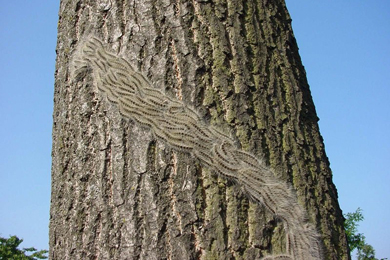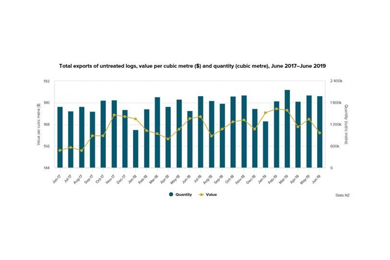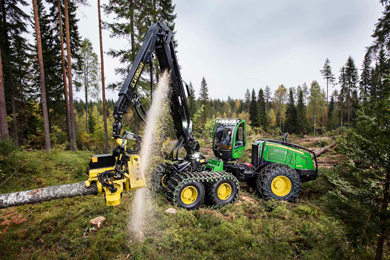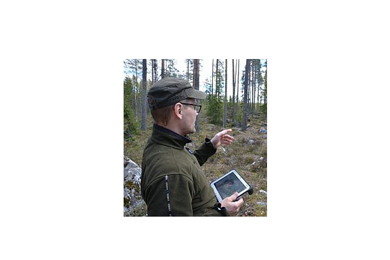The Government of Canada is investing in Canada’s resources to boost economic competitiveness while protecting the environment. By promoting innovative wood products from sustainably managed forests, Canada is supporting its forestry sector by expanding market access and creating jobs and economic opportunities for Canadians, Natural Resources Canada announced.
The multi-year investment will amount to over $24 million in six wood product associations based in British Columbia to help strengthen international demand for Canadian wood products. The federal government’s partnership with industry and the province of British Columbia in promoting this work is critical to its long-term success.
This investment includes:
$16,786,200 for Canada Wood Group in Vancouver — which brings together Canadian wood product associations — to help diversify and expand Canadian forest product exports to traditional and emerging offshore markets. Support will enable market research; assist in the transfer of technology; advance standards that will increase the use of wood in construction; and deliver training in wood design and construction in China, Japan, South Korea, India and Europe.
$3,394,709 for Forestry Innovation Investment in Vancouver — British Columbia’s market development agency for forest products — to advance training, education and wood use overseas, specifically in Asian markets such as India, Vietnam and China.
$1,925,378 for the Council of Forest Industries in Vancouver — an association that represents British Columbia’s forest industry — to help create business leads to increase the use of wood-frame construction in China, Japan and South Korea, and to reinforce the Canada Wood brand as a “go-to” source for wood construction and manufacturing technology.
$944,028 for BC Wood Specialties Group in Langley — a non-profit trade association that represents British Columbia’s value-added wood products manufacturers — to support small and medium-sized companies in their efforts to become export-ready and facilitate business-to-business opportunities for their membership through trade shows and missions.
$926,360 for the Wood Pellet Association of Canada in Revelstoke — a member-driven organization for wood pellet producers — to advance the interests of domestic wood pellet producers, to help members grow through promoting the uses of wood pellets in Canadian and global markets, and to support market and technical research and encourage fair and open energy trade.
$33,000 for Western Red Cedar Lumber Association in Vancouver — a non-profit association representing producers of cedar products — to maintain and grow the demand for western red cedar by helping increase its online presence in a number of key international markets.
Government of Canada funding is provided through Natural Resources Canada’s Expanding Market Opportunities (EMO) program, which supports market development for Canada’s forest products industry. Through Budget 2019, the government committed an additional $64 million over three years, starting in 2020–21, for EMO. This investment will help Canada’s forest sector continue to grow demand for Canadian wood products around the world in both traditional and emerging markets.
“We are proud to partner with these Canadian associations who are opening doors for our wood products in international markets. This is a great example of how we are working with industry partners to create jobs and build a more prosperous future for the many Canadian communities that depend on forestry,” said Amarjeet Sohi, Canada’s Minister of Natural Resources.
“Forestry remains B.C.’s largest manufacturing industry and a cornerstone of regional economies across the province. The federal government’s partnership with the province and industry is instrumental in diversifying markets for B.C.’s forest products and helps ensure the sector continues to be a leading contributor to our economy,” said Bruce Ralston, BC Minister of Jobs, Trade and Technology.
“The partnership between the Government of Canada and Canada Wood and our funding partners has resulted in significant positive results leading to the growth of global markets for Canadian forest products. Canada Woodreflects the strength and diversity of the Canadian forest sector through a Team Canada approach that brings together industry in Atlantic Canada, Quebec, Ontario, Alberta and B.C. An example of our success is the 27-fold increase in lumber shipments to China, making it Canada’s largest market after the U.S. in less than 15 years. The Government of Canada’s $8.5-million commitment to Canada Wood gives certainty to build on past successes and continue to diversify Canadian forest products and energy-efficient building systems to new markets,” said Bruce St.John, President, Canada Wood Group.
“This partnership between industry and government has been extremely successful as we work together to expand and diversify overseas markets for the high-quality, carbon-friendly wood products manufactured in B.C. The long-term federal funding enables us to cultivate strong relationships with overseas customers while supporting 140,000 forestry-reliant jobs in communities across British Columbia. We look forward to this continued partnership between industry and the governments of Canada and British Columbia,” said Paul Newman, Executive Director, Market and Trade, Council of Forest Industries.
“The federal government’s announcement of funding support for BC Wood’s 2019–20 market development activities is welcome news, indeed. Natural Resources Canada’s Expanding Market Opportunities program will greatly benefit the many small and medium-sized manufacturers in B.C. as they work to promote high-value products, develop new export markets, grow their businesses and generate new economic benefits and employment opportunities for the province,” said Greg Stewart, Chairman, Board of the Directors, BC Wood Specialties Group Association.
“The wood pellet industry has grown from almost nothing to 35 million tons a year globally in 25 years. Canadian pellet producers have been part of that astonishing growth from the beginning, exporting our first ship-load of pellets to Sweden in 1998. Today, Canadian pellet companies export around 3 million tons a year, contributing to Canada’s economy, jobs growth at home, forest health and the global roll-out of renewable, on-demand electricity, all while optimizing the beneficial use of waste residuals from the forestry sector. This success story has been strongly supported by the Government of Canada’s Expanding Market Opportunities (EMO) program. EMO has enabled us to be fully engaged in seeking out new customers in our export markets, carrying out market research, developing international quality standards, solving market access issues, demonstrating Canadian forest and wood pellet sustainability and many other areas of export market development. We see ongoing funding as crucial to the future growth of Canada’s share of business in key export markets, particularly those in Asia and Europe,” said Vaughan Bassett, President, Wood Pellet Association of Canada.
“Western Red Cedar Lumber Association (WRCLA) participation in the Canada Wood Group through the support of Expanding Market Opportunities program has allowed the high-value western red cedar (WRC) products to maintain visibility amongst a myriad of non-wood substitute products. The collective effort enables the WRCLA to utilize an extensive resource base with the use of advanced technology to reach target audiences and protect share in key offshore markets (as a result, offshore WRC shipments account for 15% of WRC exports by volume but, more importantly, 25% of total shipment value). This value factor is essential, given that the total annual Canadian softwood lumber exports are $10 billion and WRC, while representing less than 4% of volume, accounts for an impressive 12%, or $1.2 billion, of the value shipped in 2016 and 2017. As a result, WRC provides the primary justification to harvest,” said Jack Draper, Managing Director, Western Red Cedar Lumber Association.










